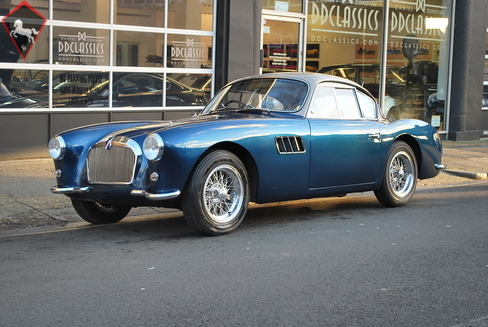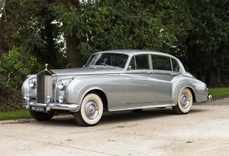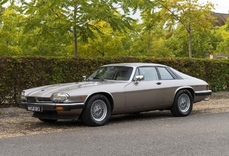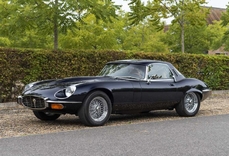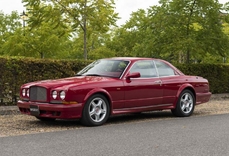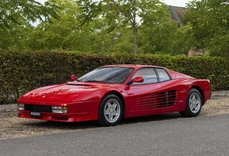Talbot-Lago T14 1956
General description :
1956 Talbot-Lago T14LS Coupe
At the 1954 Paris Motor Show, Talbot-Lago presented their last new engine - the new four cylinder twin-cam, 2491cc engine was called the T14LS. Only in May 1955 was the Talbot-Lago 2500 Coupe finally presented to the public. In total only 54 of these beautiful coupes were built.
As was typical of the period and with motor sport very much in mind, Talbot-Lago produced their cars in Right hand drive format as standard.
This exceptionally beautiful T14LS has been the subject of a complete body off, nut and bolt restoration without regards to cost. Finished in a stunning colour combination of Peacock Blue metallic with a Champagne roof and a two tone champagne and blue-grey leather interior. Sitting on wide chrome wire Borranis the car is ready to be used and will surely be welcomed at all the most interesting Concours de Elegance and Road rallies in Europe
Available for immediate viewing.
http://ddclassics.com/car-sales/Talbot-Lago-T14LS-Coupe/10536.htm
1956 Talbot-Lago T14 is listed sold on ClassicDigest in Surrey by DD Classics for Not priced.
Car Facts
Car type : Car Make : Talbot-Lago Model : T14 Engine size : 0.0 Model Year : 1956 Sub type : Coupé Location : Surrey
Sold
Seller Information
Sold
Other cars listed for sale by this dealer
About Talbot-Lago
You know, when you talk about Talbot-Lago, you're diving into the annals of automotive history, my friend. This ain't your run-of-the-mill car company; this is a name that resonates with elegance and performance.Back in the day, we're talking the early 20th century, Talbot-Lago was the brainchild of a Frenchman named Adolphe Clément-Bayard. He had a vision, you see, to combine French flair with British craftsmanship. That's how the brand Clément-Talbot came to be, a fusion of styles that produced some of the most exquisite automobiles of its time.
But it was during the interwar period that Talbot-Lago really hit its stride. Picture this: the Talbot 105. It had the kind of sleek lines and advanced engineering that turned heads. A real blend of power and sophistication, my friend.
And then there were the racing cars, oh boy. Talbot-Lago Grand Prix cars were a force to be reckoned with on the European circuits. You had powerful engines and streamlined bodies tearing up the track. They even clinched the victory at the prestigious Le Mans 24 Hours in '49. That's not just any race; that's the big league.
But Talbot-Lago wasn't just about speed; they knew how to do luxury too. The Talbot-Lago T26, especially in the Record and Grand Sport versions, was a work of art. These babies had straight-six engines that roared, plush interiors that oozed opulence, and a timeless, classic look.
Of course, like many good things, Talbot-Lago's glory days eventually came to an end. The world of automobiles evolved, and the brand faded into history. But you don't forget a name like Talbot-Lago. No, sir.
Today, those vintage Talbot-Lagos are collector's items, revered by enthusiasts who appreciate the fusion of performance and sophistication that defined the brand. Talbot-Lago may have taken its final bow, but its legacy, my friend, lives on in the hearts of those who know what true automotive artistry is all about.
